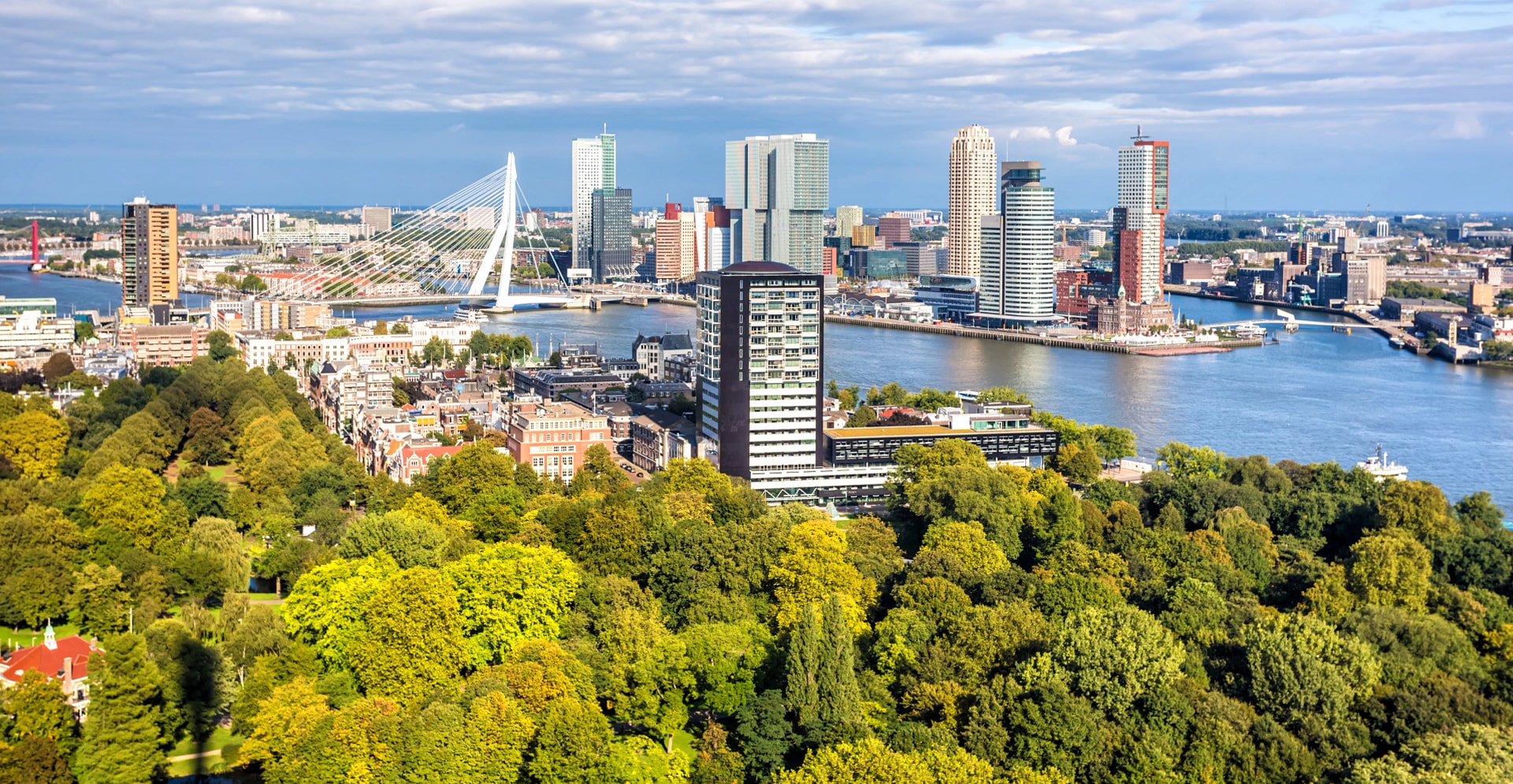Ports are essential to global trade, but they come with considerable challenges. Piet Dircke, Global Director for Climate Adaptation at Arcadis, takes a look at the most significant ones.
Ports and port cities are complex areas involving many different stakeholders. Preparing these environments for the challenges of the future involves a lot of different puzzle pieces that we need to fit together. To help with this, a roadmap or a phased plan can be very useful. On the one hand, there is the question of sustainability, with a primary focus on energy transition and carbon neutrality. On the other is the idea of resilience, with climate change adaptation strategies playing a major role here.
In this article, Arcadis' Piet Dircke looks at seven key considerations for keeping our ports and port cities resilient, while simultaneously suggesting solutions to these issues.
1. Weather phenomena
Climate change has led to an increase in extreme weather events. Among other things, this is reflected in a growing number of violent storms. The damage caused by hurricanes Ike and Harvey to Houston and its port clearly demonstrates the threat to our port areas. These are often 'open' cities located on river deltas and built at sea level, meaning they cannot be shielded behind a dike. The problem we face is that ports must be kept as open as possible, but they also need adequate protection.
The solution: A moving flood barrier that is easy to navigate is a good balance of openness and protection. These barriers are large steel gates that can be closed in the event of extreme weather. Examples of these high-tech structures include The Netherlands' Maeslantkering in Rotterdam, and our storm surge barrier in Nieuwpoort, Belgium, at the mouth of the River Yser. These are multi-million or even multi-billion dollar investments, but their impact on the ecosystem and on navigation is minimal.
2. Nature-based solutions
The need for nature-based solutions to help strengthen our coasts is increasingly pressing. These ecosystem-friendly solutions also contribute to the longevity of ports. But how can we use them in conjunction with a civil engineering solution — such as a dike or flood barrier — that must also provide adequate protection?
The solution: A multipurpose flood defense combines a primary concrete use with a secondary, more abstract one. This is an integrated approach to water confinement and spatial development in an urban environment. For example, this could mean concealing a dike under a dune. The result is often a multifunctional solution that also provides added economic value in densely populated urban areas, such as the Katwijk dike and parking lot in the Netherlands. The projects underway along the Lower Manhattan coastline also illustrate the possibilities offered by multifunction solutions in a highly urbanized city such as New York.
3. Rising sea levels
Rising sea levels are another consequence of climate change that could pose an even greater threat to our port areas. They present a myriad of problems, ranging from salinization of inland regions to issues with drinking water and landslides.
The solution: Flood barriers cannot be used as a defense against rising sea levels. Therefore, the primary solution is to raise or move at-risk areas.
4. Dredged materials
Navigation channels in port areas are dredged regularly to keep them at the right depth. The sludge extracted during this process is often polluted, for example by chemicals or other harmful substances. This means that the management of dredged materials is a shared responsibility subject to all manner of laws and regulations. In addition, disposal costs are high.
The solution: With the necessary treatment, dredged materials can in theory be reused to develop eco-friendly embankments. This is something that several ports, including Rotterdam, New York and New Orleans, are currently looking into. Naturally, their focus is also very much on the safety of the materials used.

5. Regeneration
Port cities are characterized by a particular dynamic. Slowly but surely, their activities are expanding, resulting in ever-larger vessels carrying more containers, which require wider basins, longer quay walls and deeper channels. Port activities are therefore moving further and further away from downtown areas, where many ports have historically emerged. Examples can be seen all over the world, including Rotterdam, Hamburg, London, New York and San Francisco.
The areas that are freed up as a result offer new opportunities for urban development along the — often attractive — waterfront. However, it is not uncommon for these areas to be rundown and abandoned, with the remaining inhabitants plagued by unemployment, high crime levels and other social issues. Regeneration projects to revitalize these waterfronts therefore require a particular approach that not only considers the economic opportunities, but also involves all groups of the population. This in turn drives social cohesion and local employment.
The solution: Success stories from places such as Rotterdam, London, Copenhagen, Stockholm, New York, New Orleans, San Francisco, Houston, Singapore and Hong Kong demonstrate how cities are breathing new life into these areas for their residents, businesses and visitors. It is no coincidence that these projects are often also at the forefront of climate change adaptation initiatives, becoming an inspiration to other cities. That being said, the fact that ports are actually competitors can complicate this process somewhat.
6. Floating cities
Regeneration is not just for cities. Wetlands that fall into disuse due to bustling port activities sometimes also need a new lease of life. At the very least, they offer some amazing possibilities.
The solution: Rotterdam, London and Hamburg have already demonstrated intelligent use of the available space. Floating houses, offices and even farms are a response to a growing population and rising sea levels. For example, the Netherlands' Rijnhaven port is home to Floating Office Rotterdam, the largest floating office building in the world. In Hamburg, the former port area on the Elbe River has been transformed into HafenCity.
7. Water transport
Our port cities are sinking. In addition, road transport (for passengers) is at the bottom of the class when it comes to sustainability.
The solution: Water transport is often a possibility for port cities. It makes some areas more accessible while easing congestion in others. Examples of water transport include ferries and water taxis, which are used in Rotterdam and New York. In San Francisco Bay, Sausalito's floating houseboat community is another example of what can be possible. This small port focuses mainly on tourism and skillfully plays the water-transport card.
|
Working Together to Harness Opportunities Ports are a vital part of our economy. However, they are open and low lying, leaving them vulnerable to the consequences of climate change. Port cities must adopt sustainable solutions to protect themselves against this phenomenon, but at the same time they can benefit from all manner of possibilities offered by this transformation. The key points highlighted above can serve as a basis for drafting a roadmap. It is essential to involve all stakeholders in the process from the outset. Port cities bring together all kinds of businesses and public services, and each party (private or public) has its own concerns. Collaboration is therefore key. Everyone must contribute to the search for integrated and multidisciplinary solutions. Arcadis can also help with this by providing guidance and support. |







